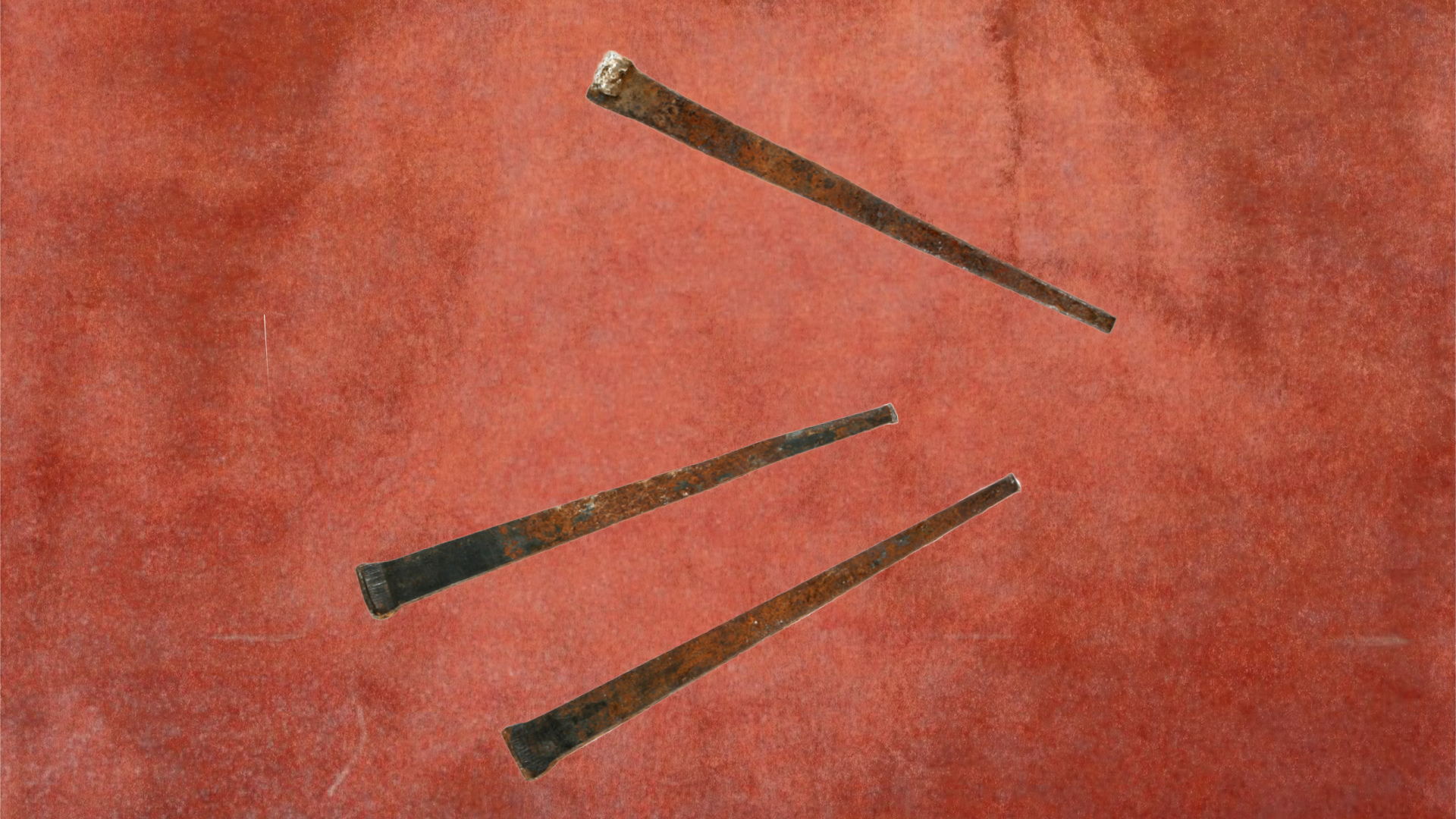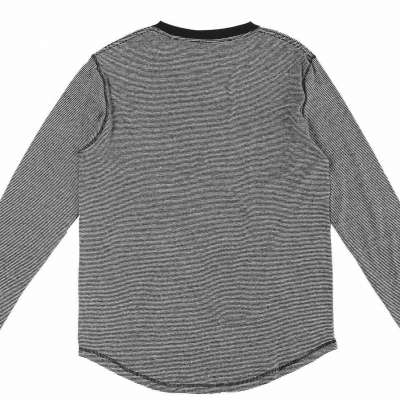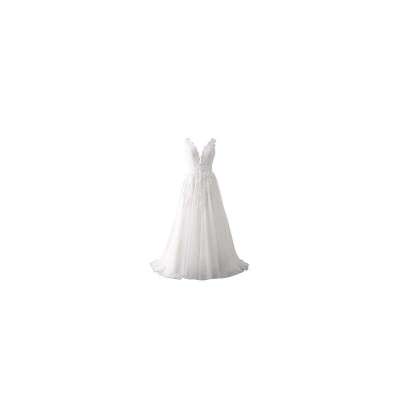
www.thegospelcoalition.org
Pierced for Our Transgressions: Why Nails Matter
Details matter—whether you’re working on your tax return, building a house, or counting electrons. The Gospel writers only include the most germane details in their accounts. Problems arise when we brush them aside or accuse the early church of embedding details within the narrative to give the Gospel accounts a more authentic feel.
Let’s look afresh at the evidence for nails at the crucifixion and flesh out their redemptive-historical significance.
Evidence for Nails
John’s Gospel is the only one that explicitly mentions Jesus’s hands bearing the marks of nails: “[Jesus] showed [the disciples] his hands and his side. . . . ‘Unless I [Thomas] see in his hands the mark of the nails, and place my finger into the mark of the nails.’ . . . ‘Put your finger here, and see my hands’” (20:20, 25, 27).
Matthew and Mark are silent on the matter, but Luke includes a verse that probably implies the use of nails in the crucifixion: “See my hands and my feet, that it is I myself. Touch me, and see” (24:39; see also v. 40). In both narratives, Jesus uses the physical marks on his body as evidence for his physical resurrection. While ancient authors mention that individuals were sometimes tied to a cross (e.g., Pliny in Natural History), two of the four Gospels present a different picture: that nails pierced Jesus’s wrists and feet. One implies it, and the other explicitly mentions it. Note that the Hebrew and Greek words for “hand” can mean “wrist.”
If the Roman soldiers merely bound Jesus’s wrists and feet, what physical proof would Jesus show to the disciples? Keep in mind, too, that when Jesus utters these words, he’s in his glorified body. Remarkably, his glorified body preserves marks of his death. These nail marks are a symbolic and public reminder of the price Jesus paid to bear God’s wrath and right humanity’s wrongs. Some argue that the early church created these post-resurrection accounts, but that line of reasoning merely kicks the can down the road. Why would the church fabricate such a claim? To make the crucifixion even more horrific?
These nail marks are a symbolic and public reminder of the price Jesus paid to bear God’s wrath and right humanity’s wrongs.
The apostle Paul even mentions nails used in Christ’s death: “[God canceled] the record of debt that stood against us with its legal demands. This he set aside, nailing it to the cross” (Col. 2:14). Of course, Paul is speaking symbolically of the believer’s spiritual debt being “nailed” to the cross, but the symbol’s power rests in the reality of Christ being physically nailed to the cross.
Prophetic Significance of Piercing
There are other reasons why it’s important that nails pierced Christ’s hands and feet. The emphasis, though, isn’t so much on the instrument (the nails) but the manner (the piercing). Three Old Testament texts situate piercing along a redemptive-historical plane:
“Dogs encompass me; a company of evildoers encircles me; they have pierced my hands and feet.” (Ps. 22:16)
“He was pierced for our transgressions; he was crushed for our iniquities.” (Isa. 53:5)
“They [will] look on me, on him whom they have pierced.” (Zech. 12:10)
Isaiah 53:5 is a well-known verbal prophecy that describes the Lord’s servant bearing God’s curse on behalf of the covenant community (see also Isa. 50:4–9; 52:13–53:12). Zechariah 12:10 is a verbal prophecy that concerns Israel’s repentance for their sins of persecuting the Lord’s anointed (see also Zech. 9:9; 13:7). The New Testament authors often draw from these two prophecies. John’s Gospel even quotes Zechariah 12:10 in 19:37—the piercing mentioned there, though, refers to the piercing of Jesus’s side (v. 34).
These words for piercing aren’t unique in the Old Testament; they occur often in military contexts or in the context of punishing the wicked (e.g., Num. 25:8; Judg. 9:54; Job 26:13; Isa. 51:9; Zech. 13:3). But that’s precisely the point. Piercing is supremely ironic. If anyone should be pierced, it should be the enemies of God and Israel.
Piercing is supremely ironic. If anyone should be pierced, it should be the enemies of God and Israel.
It’s possible the prophecies of Isaiah 53 and Zechariah 12 are exhausted in the piercing of Jesus’s side, but Psalm 22:16 explicitly refers to the piercing of hands and feet. This verse describes how David’s enemies “pierced” or “gouged” his “hands and feet,” and it appears to be the only Old Testament passage that refers to the piercing of hands and feet. While the Hebrew text of Psalm 22:16 says “like a lion,” the Greek translation of the Old Testament that predates the New Testament and the Dead Sea Scrolls says “they pierced.” Indeed, the majority of English translations of Psalm 22:16 follow the reading “they pierced.” The point is that David’s enemies are like vicious animals who puncture his hands and feet. The picture is that the enemies “nip and bite, and in the process puncture the extended limbs.”
Promise Fulfilled
If you consult the cross-references in your Bible’s margins, you’ll see all four Gospels allude to Psalm 22 as they narrate the crucifixion (see Matt. 27:35, 39, 41, 42, 43; Mark 15:24, 29, 31; Luke 23:34, 35, 36; John 19:23, 24). Jesus even quotes verse 1 (“My God, my God, why have you forsaken me?”) in Matthew 27:46 and Mark 15:34. Three of the four evangelists possibly allude to verse 16 as they describe Jesus being crucified between two criminals (Matt. 27:38; Luke 23:33; John 19:18). So when Jesus commands Thomas and the disciples to look at his “hands” and “feet” (Luke 24:39; John 20:20, 25), he could subtly be alluding to verse 16 since Psalm 22 features so prominently at the crucifixion.
The early church was convinced that Jesus was nailed to the cross (e.g., Justin Martyr, Ignatius, Irenaeus, Tertullian, and Origen), and so are most contemporary commentators (e.g., Raymond Brown, I. Howard Marshall, Craig Keener, and Eckhard Schnabel). By preserving the details about nails that pierced Jesus’s hands and feet, we’re reminded that at the gospel’s heart lies One who is pierced, One who bore God’s wrath, so you and I can enjoy God’s favor.














